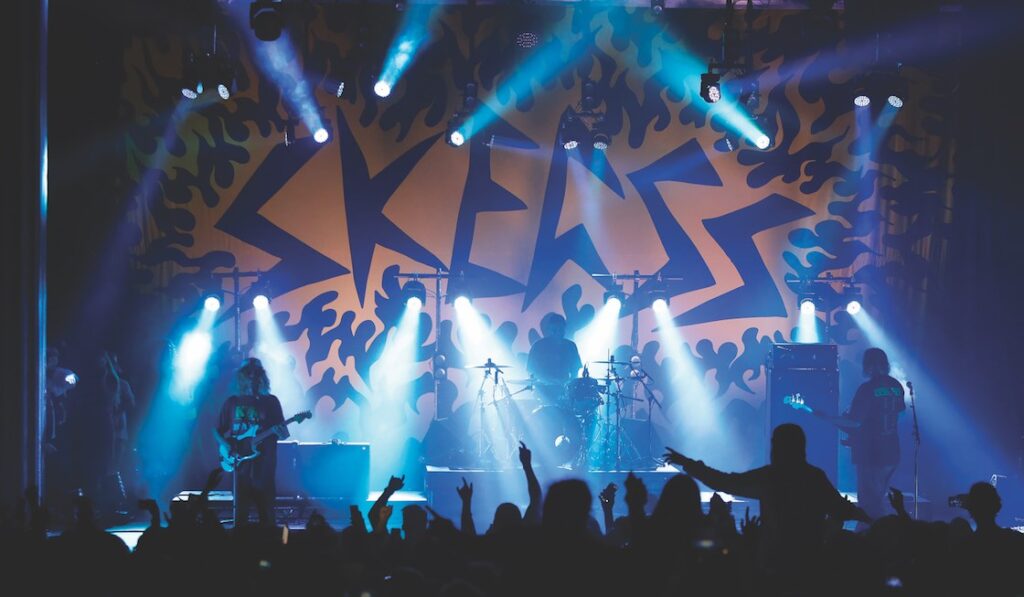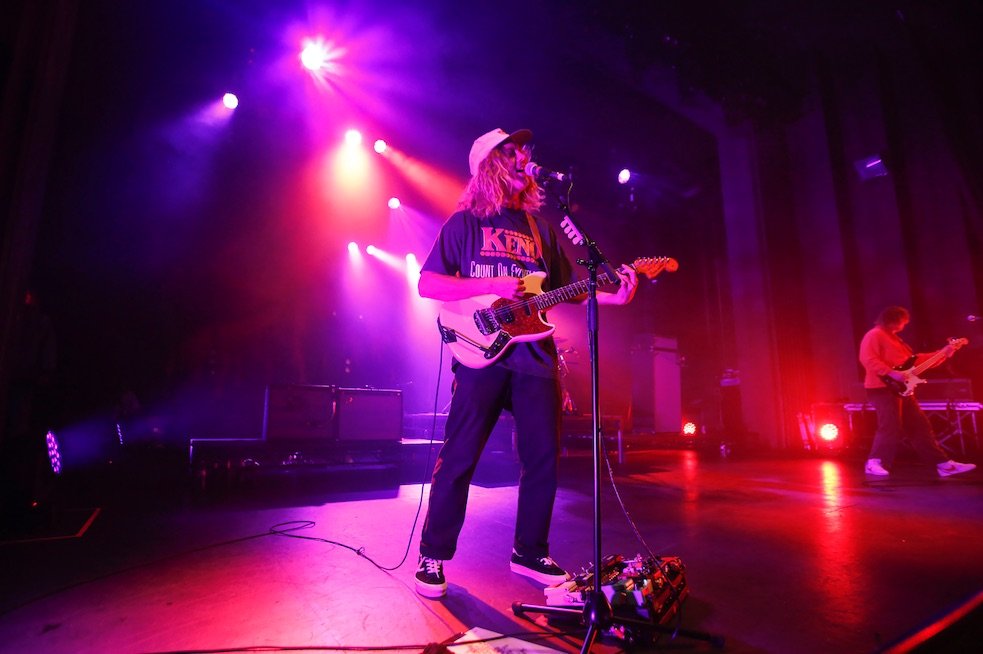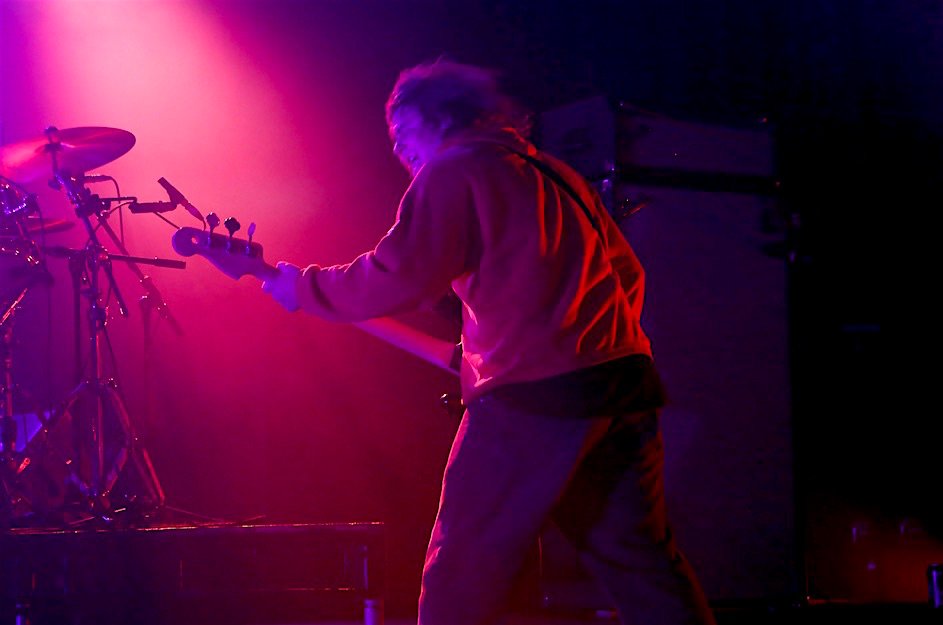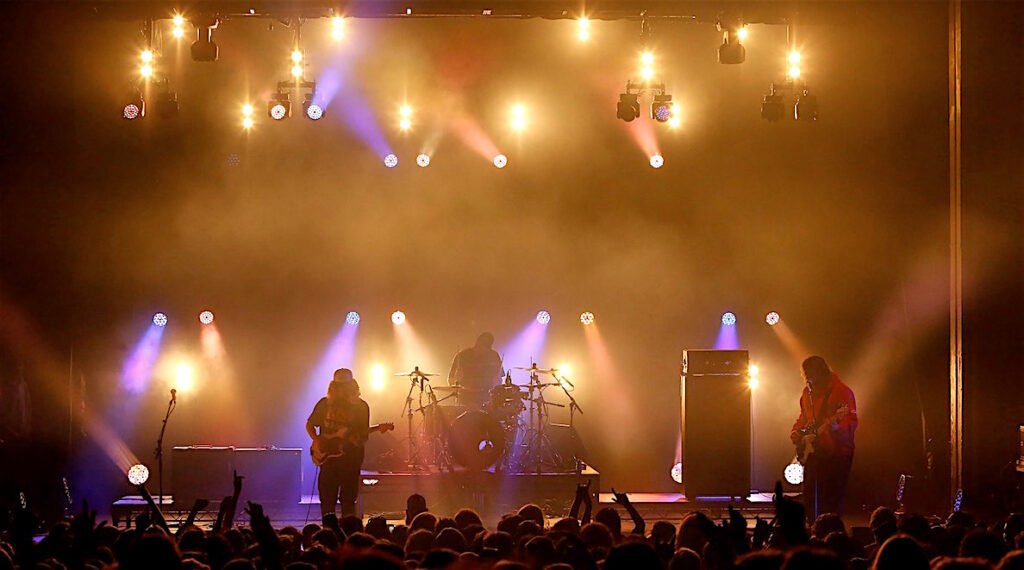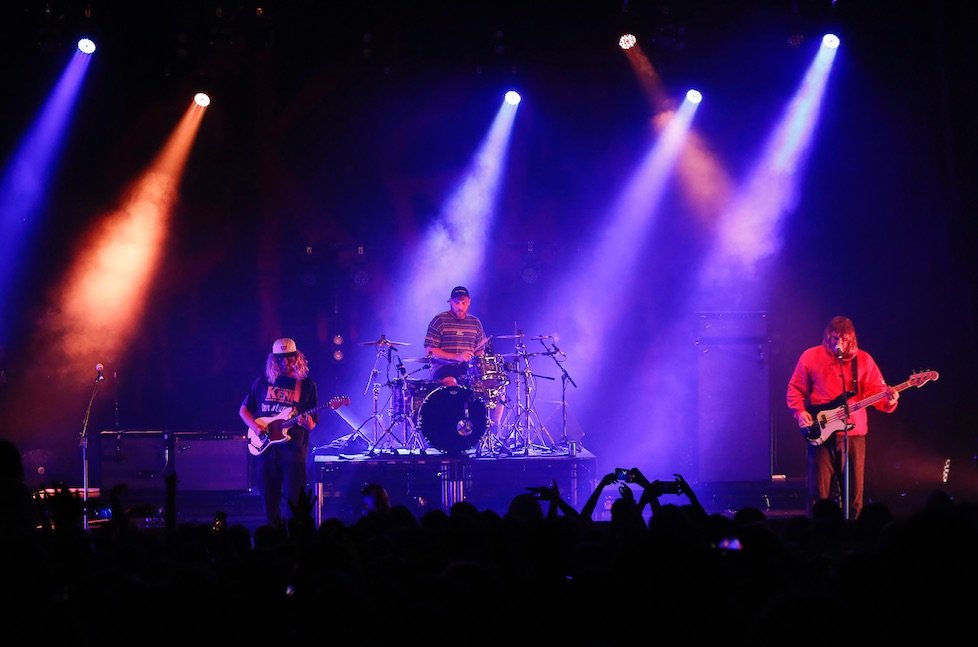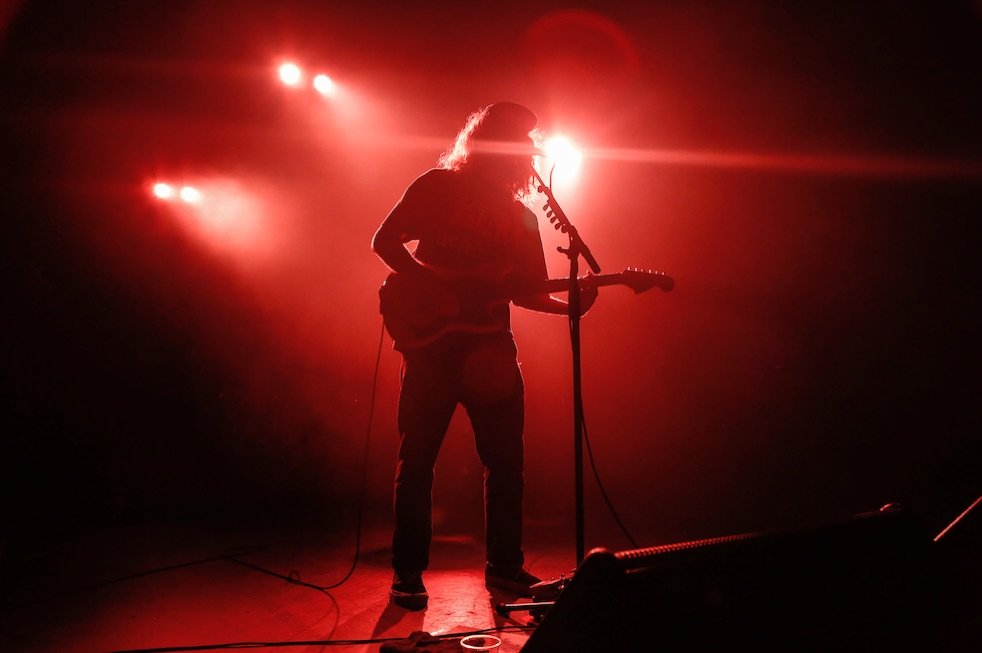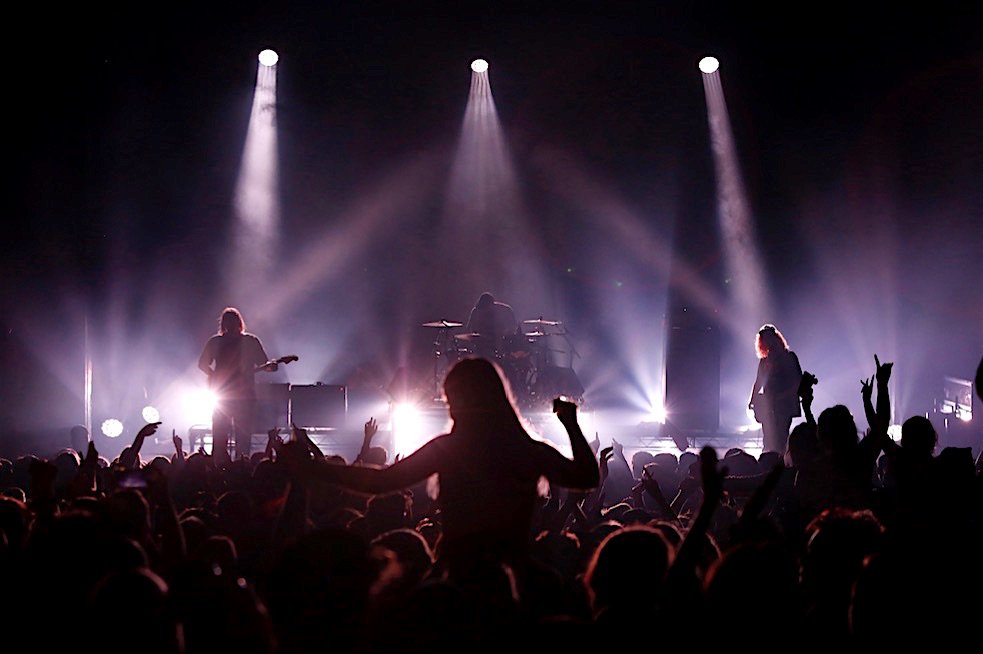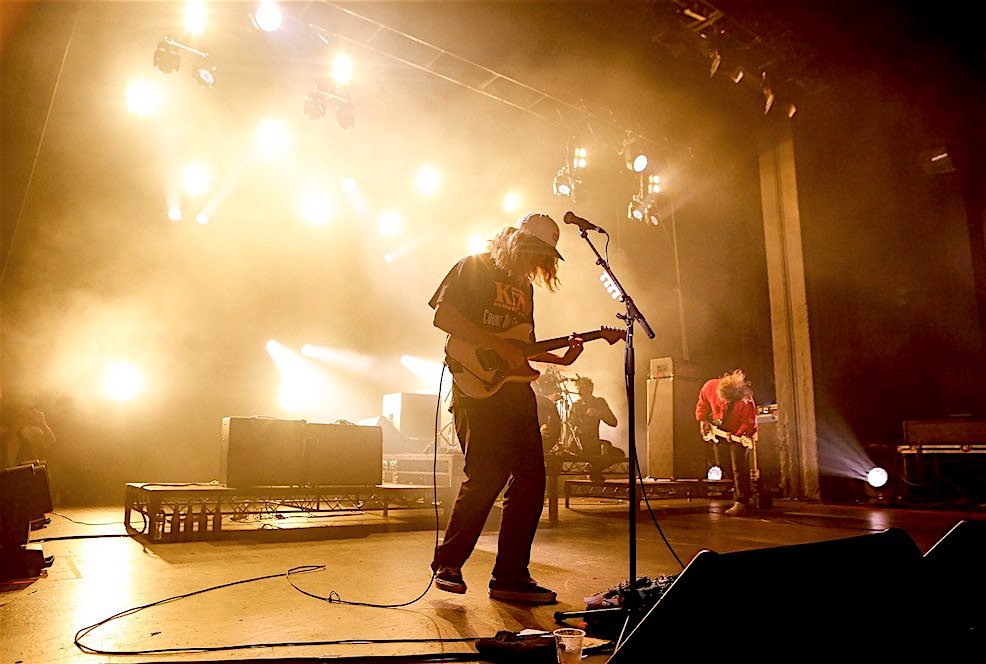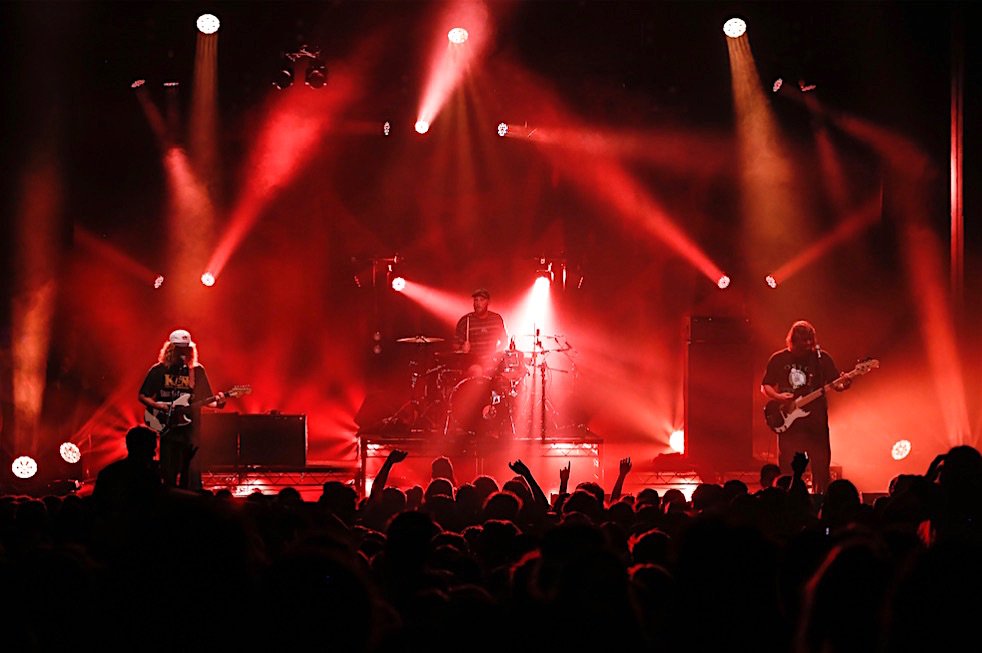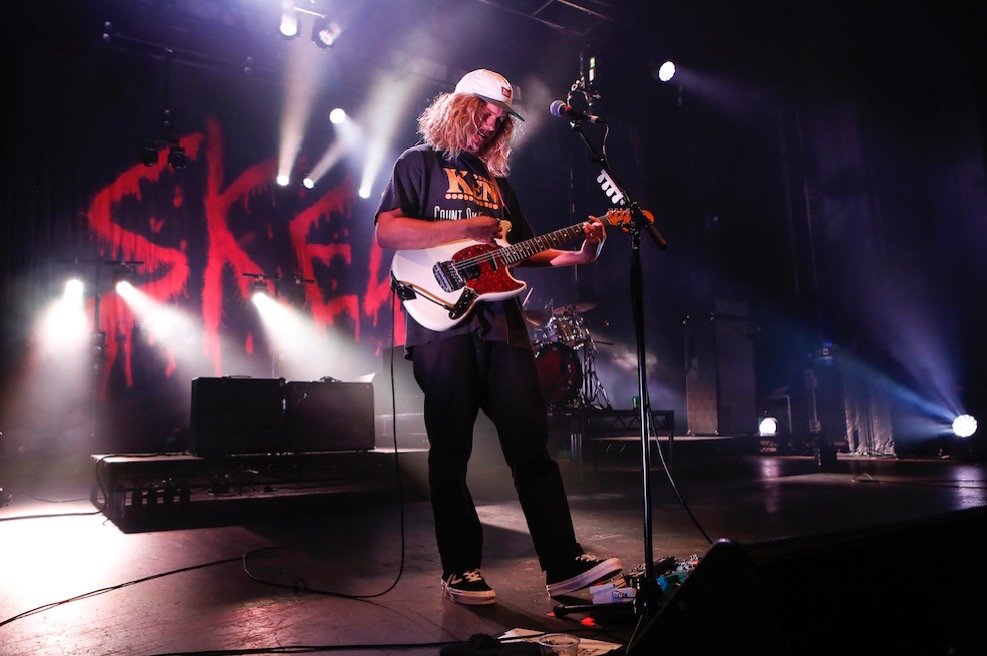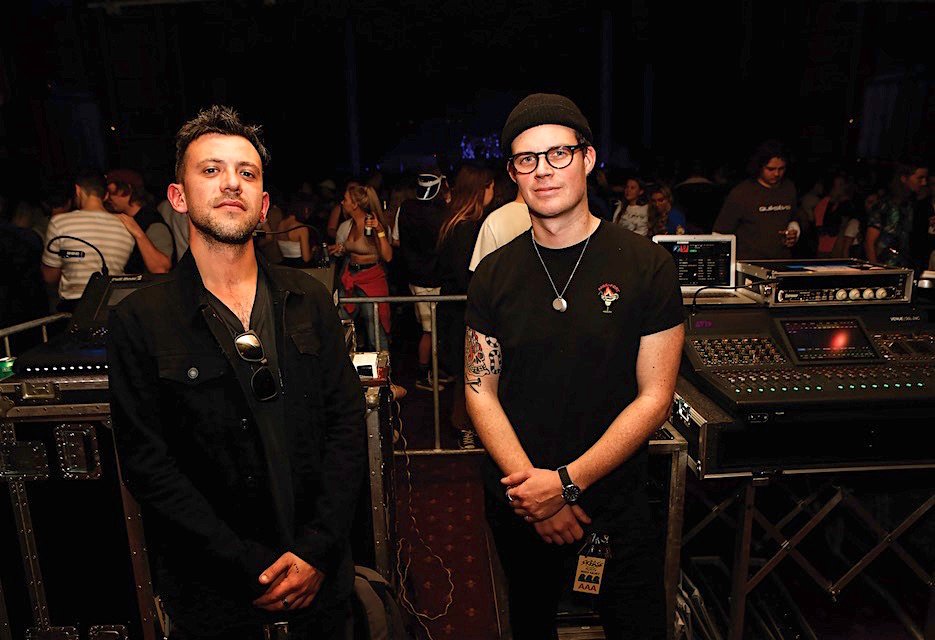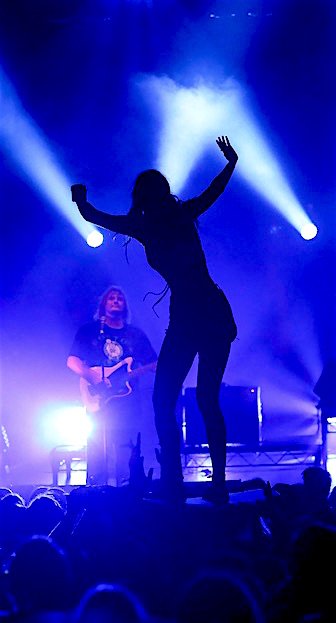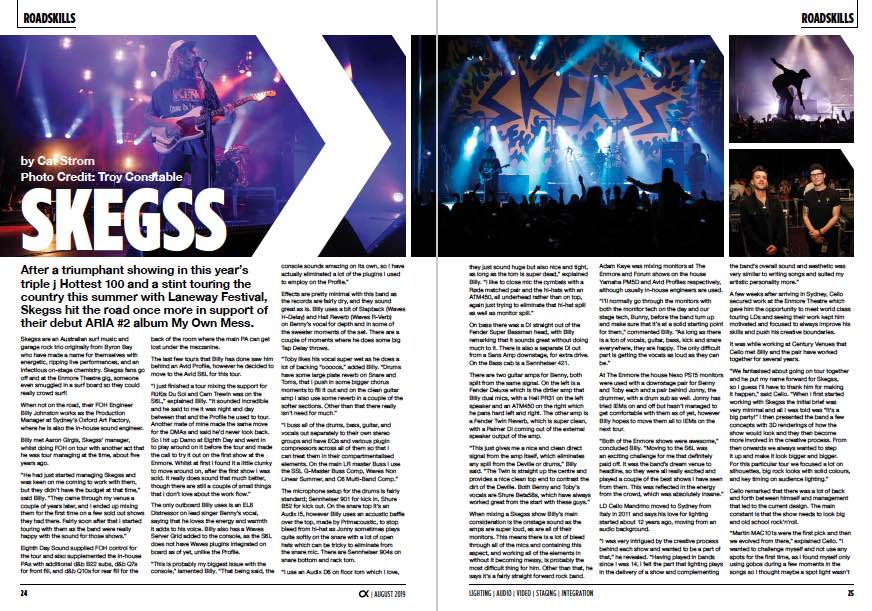News
27 Aug 2019
Skegss
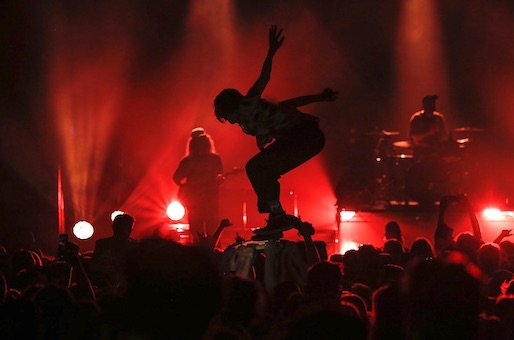
Subscribe to CX E-News
ROADSKILLS
Skegss
by Cat Strom.
Photo Credit: Troy Constable
After a triumphant showing in this year’s triple j Hottest 100 and a stint touring the country this summer with Laneway Festival, Skegss hit the road once more in support of their debut ARIA #2 album My Own Mess.
Skegss are an Australian surf music and garage rock trio originally from Byron Bay who have made a name for themselves with energetic, ripping live performances, and an infectious on-stage chemistry.
Skegss fans go off and at the Enmore Theatre gig, someone even smuggled in a surf board so they could really crowd surf!
When not on the road, their FOH Engineer Billy Johnston works as the Production Manager at Sydney’s Oxford Art Factory, where he is also the in-house sound engineer.
Billy met Aaron Girgis, Skegss’ manager, whilst doing FOH on tour with another act that he was tour managing at the time, about five years ago. “He had just started managing Skegss and was keen on me coming to work with them, but they didn’t have the budget at that time,” said Billy.
“They came through my venue a couple of years later, and I ended up mixing them for the first time on a few sold out shows they had there. Fairly soon after that I started touring with them as the band were really happy with the sound for those shows.”
Eighth Day Sound supplied FOH control for the tour and also supplemented the in-house PAs with additional d&b B22 subs, d&b Q7s for front fill, and d&b Q10s for rear fill for the back of the room where the main PA can get lost under the mezzanine.
The last few tours that Billy has done saw him behind an Avid Profile, however he decided to move to the Avid S6L for this tour.
“I just finished a tour mixing the support for Rüfüs Du Sol and Cam Trewin was on the S6L,” explained Billy. “It sounded incredible and he said to me it was night and day between that and the Profile he used to tour.
“Another mate of mine made the same move for the DMAs and said he’d never look back. So I hit up Damo at Eighth Day and went in to play around on it before the tour and made the call to try it out on the first show at the Enmore.
“Whilst at first I found it a little clunky to move around on, after the first show I was sold. It really does sound that much better, though there are still a couple of small things that I don’t love about the work flow.”
The only outboard Billy uses is an EL8 Distressor on lead singer Benny’s vocal, saying that he loves the energy and warmth it adds to his voice. Billy also has a Waves Server Grid added to the console, as the S6L does not have Waves plugins integrated on board as of yet, unlike the Profile.
“This is probably my biggest issue with the console,” lamented Billy. “That being said, the console sounds amazing on its own, so I have actually eliminated a lot of the plugins I used to employ on the Profile.”
Effects are pretty minimal with this band as the records are fairly dry, and they sound great as is. Billy uses a bit of Slapback (Waves H-Delay) and Hall Reverb (Waves R-Verb) on Benny’s vocal for depth and in some of the sweeter moments of the set. There are a couple of moments where he does some big Tap Delay throws. “Toby likes his vocal super wet as he does a lot of backing “ooooos,” added Billy.
“Drums have some large plate reverb on Snare and Toms, that I push in some bigger chorus moments to fill it out and on the clean guitar amp I also use some reverb in a couple of the softer sections. Other than that there really isn’t need for much.”
“I buss all of the drums, bass, guitar, and vocals out separately to their own stereo groups and have EQs and various plugin compressors across all of them so that I can treat them in their compartmentalised elements. On the main LR master Buss I use the SSL G-Master Buss Comp, Waves Non Linear Summer, and C6 Multi-Band Comp.”
The microphone setup for the drums is fairly standard; Sennheiser 901 for kick in, Shure B52 for kick out. On the snare top it’s an Audix i5, however Billy uses an acoustic baffle over the top, made by Primacoustic, to stop bleed from hi-hat as Jonny sometimes plays quite softly on the snare with a lot of open hats which can be tricky to eliminate from the snare mic. There are Sennheiser 904s on snare bottom and rack tom.
“I use an Audix D6 on floor tom which I love, they just sound huge but also nice and tight, as long as the tom is super dead,” explained Billy.
“I like to close mic the cymbals with a Røde matched pair and the hi-hats with an ATM450, all underhead rather than on top, again just trying to eliminate that hi-hat spill as well as monitor spill.”
On bass there was a DI straight out of the Fender Super Bassman head, with Billy remarking that it sounds great without doing much to it. There is also a separate DI out from a Sans Amp downstage, for extra drive. On the Bass cab is a Sennheiser 421.
There are two guitar amps for Benny, both split from the same signal. On the left is a Fender Deluxe which is the dirtier amp that Billy dual mics, with a Heil PR31 on the left speaker and an ATM450 on the right which he pans hard left and right.
The other amp is a Fender Twin Reverb, which is super clean, with a Palmer DI coming out of the external speaker output of the amp. “This just gives me a nice and clean direct signal from the amp itself, which eliminates any spill from the Deville or drums,” Billy said.
“The Twin is straight up the centre and provides a nice clean top end to contrast the dirt of the Deville. Both Benny and Toby’s vocals are Shure Beta58s, which have always worked great from the start with these guys.”
When mixing a Skegss show Billy’s main consideration is the onstage sound as the amps are super loud, as are all of their monitors. This means there is a lot of bleed through all of the mics and containing this aspect, and working all of the elements in without it becoming messy, is probably the most difficult thing for him. Other than that, he says it’s a fairly straight forward rock band.
Adam Kaye was mixing monitors at The Enmore and Forum shows on the house Yamaha PM5D and Avid Profiles respectively, although usually in-house engineers are used.
“I’ll normally go through the monitors with both the monitor tech on the day and our stage tech, Bunny, before the band turn up and make sure that it’s at a solid starting point for them,” commented Billy.
“As long as there is a ton of vocals, guitar, bass, kick and snare everywhere, they are happy. The only difficult part is getting the vocals as loud as they can be.”
“Both of the Enmore shows were awesome,” concluded Billy. “Moving to the S6L was an exciting challenge for me that definitely paid off. It was the band’s dream venue to headline, so they were all really excited and played a couple of the best shows I have seen from them. This was reflected in the energy from the crowd, which was absolutely insane.”
At The Enmore the house Nexo PS15 monitors were used with a downstage pair for Benny and Toby each and a pair behind Jonny, the drummer, with a drum sub as well. Jonny has tried IEMs on and off but hasn’t managed to get comfortable with them as of yet, however Billy hopes to move them all to IEMs on the next tour.
LD Cello Mandrino moved to Sydney from Italy in 2011 and says his love for lighting started about 12 years ago, moving from an audio background. “I was very intrigued by the creative process behind each show and wanted to be a part of that,” he revealed.
“Having played in bands since I was 14, I felt the part that lighting plays in the delivery of a show and complementing the band’s overall sound and aesthetic was very similar to writing songs and suited my artistic personality more.”
A few weeks after arriving in Sydney, Cello secured work at the Enmore Theatre which gave him the opportunity to meet world class touring LDs and seeing their work kept him motivated and focused to always improve his skills and push his creative boundaries. It was while working at Century Venues that Cello met Billy and the pair have worked together for several years.
“We fantasised about going on tour together and he put my name forward for Skegss, so I guess I’ll have to thank him for making it happen,” said Cello.
“When I first started working with Skegss the initial brief was very minimal and all I was told was “it’s a big party!” I then presented the band a few concepts with 3D renderings of how the show would look and they then become more involved in the creative process.
From then onwards we always wanted to step it up and make it look bigger and bigger. For this particular tour we focused a lot on silhouettes, big rock looks with solid colours, and key timing on audience lighting.”
Cello remarked that there was a lot of back and forth between himself and management that led to the current design. The main constant is that the show needs to look big and old school rock’n’roll.
“Martin MAC101s were the first pick and then we evolved from there,” explained Cello. “I wanted to challenge myself and not use any spots for the first time, as I found myself only using gobos during a few moments in the songs so I thought maybe a spot light wasn’t the best decision for this show. All in all, I am very happy with how it turned out.”
The lighting rig was supplied by EI Productions and being an up-and-coming band, the budget was not huge. The rig included 24 MAC101s, 6 MAC Auras, 15 Claypaky B-EYE K10s, 20 Molefay Duets and a couple of hazers. However Cello proves that it’s not always about how many fixtures you have but what you do with them that counts.
Cello always tries to maximise the love/hate relationship between design and budget. The MAC 101s were chosen to recreate old school rock looks, while the Claypaky B-EYEs are not only a very powerful wash light, but can also deliver texture with the beam FX and ring macros.
“In this particular case, it is like having two fixtures into one which always helps to keep the budget in line,” added Cello.
“I think the most important thing to create big looks is not how many fixtures you have, but their placement in the rig, trimming your truss right and the positions you have programmed.
“To look big it needs to fill the space. The pairing of MAC101s and the Molefay Duets on this design are a perfect example. Being on different length dropper pipes trimmed accordingly, alongside with the ones on the floor uprights gave the stage an incredible sense of depth without having to cloud it with too much.”
Cello remarked that the MAC101s are one of his all-time favourite fixtures, adding that he has used them with Skegss since their first tour as he needed a compact and very fast fixture that could somehow resemble a PAR Can look. They’ve been part of the show look ever since.
The MAC Auras are his stock standard wash light as he favours their colour mixing and zoom. The B-EYEs were deployed as the main texture and FX fixture with 12 on the floor (six upstage and three each side) and three more as band key lights.
Cello noted that the versatility they provide with their FX engine allowed him to swap between looks without having to hire two different fixtures.
For control, Cello runs a HES Hog4 as it is a platform he has been using for a decade. Since the release of Hog4, he doubts he’ll ever move away from it. “High End Systems have really delivered a stable, powerful, versatile and intuitive platform,” he said.
“The simplicity of the operating system is like no other. Complex programming can easily be achieved without having to delve into an endless series of sub-menus.
“Comment macros are definitely one of the functions I couldn’t do without. Also cloning fixtures and merging show files is by far the easiest and least painful I’ve experienced, which comes incredibly handy when you keep jumping between different fixtures, designs, and festivals rigs on never enough sleep.”
CX Magazine – August 2019 Entertainment technology news and issues for Australia and New Zealand – in print and free online www.cxnetwork.com.au
© CX Media
Subscribe
Published monthly since 1991, our famous AV industry magazine is free for download or pay for print. Subscribers also receive CX News, our free weekly email with the latest industry news and jobs.

